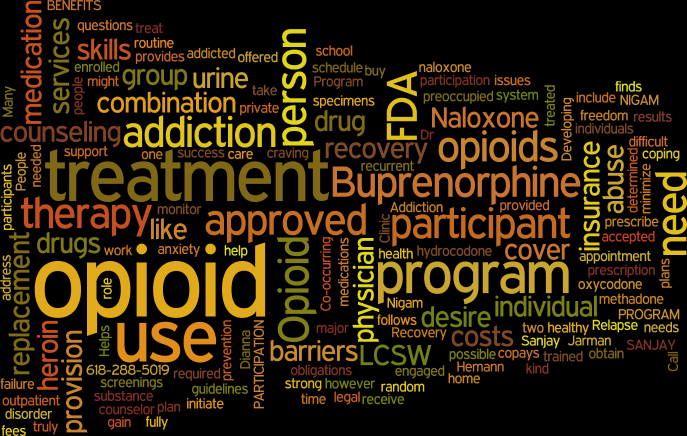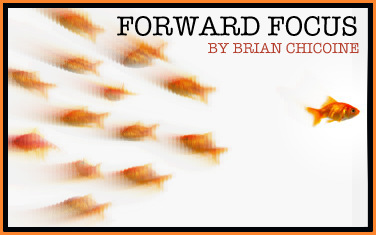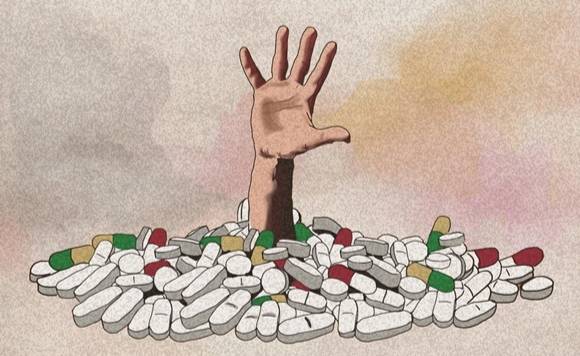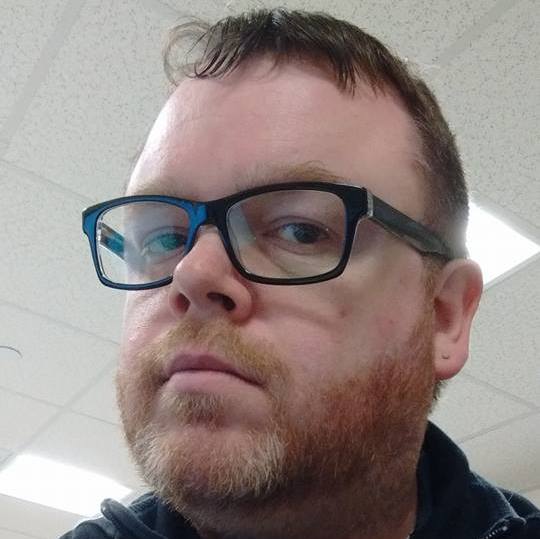
 This is the conclusion of “Faces of Recovery” – a two-part series that highlights the stories of two guys in recovery who both work at Hope for New Hampshire Recovery in Manchester.
This is the conclusion of “Faces of Recovery” – a two-part series that highlights the stories of two guys in recovery who both work at Hope for New Hampshire Recovery in Manchester.
You can read part 1 here, if you missed it.
One thing that I often hear during discussions about addiction and recovery – and totally disagree with – is the notion that “all addicts made their choice.” This may be true in some cases, someone chose to experiment with opioids and ended-up addicted, but in many cases the addiction started because someone simply followed a post-surgical pain management plan. A plan that involved using legally prescribed medication.
Eric’s story:
“There’s a lot of similarities between Adam’s story and mine. Growing up I came from your stereotypical all-American family. Loving parents and siblings, all very close. Through high school I didn’t experiment with drugs or alcohol at all. Got to college and experimented a little bit. My first exposure to opiates was through a prescription of Percocet for a back injury and remember that immediately it did two things: It made me violently sick first, but it also immediately took away every fear, doubt, and insecurity I ever had in my entire life, and for the first point in my life I was comfortable in my own skin – so it did both. I loved that feeling, it gave me a sense of confidence that I had not had, really ever. And from there, that initial exposure, it rapidly progressed to Oxycontin. This was in the early 2000s when Oxycontin really exploded onto the scene and was marketed as this non-addictive opiate alternative, which is insane in its own right. It progressed for me to up to 400 milligrams a day.

“I remember in 2007, in order to get out of bed, I had to do 160 milligrams of Oxycontin – just to be able to physically get out of bed – and that was $160 at the time – a dollar per milligram. I was working at the time, so you can imagine that all of my money was going to that and it absolutely was not sustainable. And then an option was put in front of me for something that was a fraction of the cost that would prevent me from getting sick, which was heroin – and I tried it. And it did exactly what I needed it to do. I was no longer getting high to get high and feel good, I was getting high to be able to work, because I had absolutely no idea on how to stop using. I didn’t know the first thing about recovery or how to enter it or treatment. All I knew is that I didn’t really want to get sick — because it was awful. So, it started with heroin and that progressed over a period of years. 2010 was when I really first tried to get sober and went through clinical treatment, went through rehab, and that is where historically it pretty much has ended for me.
“I would go through treatment, I would go to meetings for a period of time, and then I would stop, because for a very long time – no pun intended – it was a difficult pill to swallow that I have this disease, I was an addict, suffered from this, and it is a recurring, chronic illness that I’ll have and need to manage for the rest of my life. I was very ashamed of that, and not accepting of that. I would stay sober for a period of time without having other people in recovery around me. The one good thing that I have is this wonderful, supportive family; I have wonderful, supportive friends who don’t use drugs or alcohol – at all. But – their great to be around but they also don’t know what I go through and just how crazy my thoughts can be on any given day.
“I don’t have a drug problem – that’s a symptom of problem that I have. At any rate, I would stay sober. Maybe it was six months that I would stay sober or maybe it was a year or maybe even up to a year and a half, two years, but eventually I would relapse and I would go through treatment again. It was a pattern that repeated itself. I relapsed early last year, and I think that was my first relapse with fentanyl, being as prevalent as it was, order a magnitude stronger than heroin, and it was a rapid, rapid fall for me. Towards the very end I overdosed four times – I overdosed once with my 2-year-old in the car — and I still get choked-up over that. I remember when she was born I said, ‘there’s no way I’m gonna relapse now. I have this amazing daughter – I’m a good man, I’m a great father – sober and in recovery, so how could I possibly relapse with this beautiful girl’ – and I did. Thankfully, nobody was hurt – I survived, but that was really an awakening for me. If I am capable of relapsing while having a daughter, then I need to manage this – I have to. That’s what it really took for me to accept the fact that I have this substance use disorder and I need to manage it every day.

“I’d love to say that when that happened I stopped right then and there, that day. The truth is I couldn’t. I was so hijacked and that’s what happens. People ask me what it’s like and it’s very difficult to describe – I’d be screaming at myself not to do something but completely incapable of not doing it. There was a real disconnect between what I was saying to myself and the actions that I was taking. The closest that I can come to is imagine holding your breath and screaming at yourself not to take a breath – I mean really scream at yourself not to take a breath and your body is saying to take that breath. It just is, it’s a fight, flight survival instinct – and that’s what happens in active addiction. And in order to arrest that, I had to go through treatment, and a lot of it. Even after that treatment it was tough. I started coming here and just volunteering here because I needed a safe place to go and needed people to understand.
“That supportive family is wonderful on one hand, but you take the person that comes in here, in crisis, that’s been homeless for three years, that’s looking for treatment that I’ve never met, and that person knows me on a deeper, more fundamental level than anybody in my family ever could. And that’s what I need. A friend that has not experienced this can ask me ‘how you doing’ and I can say ‘fine’ and that’s the end of it because that’s what we do. Adam can ask me ’how you doing’ and I respond ‘fine’ and he’ll dig a little bit deeper because he can tell what fine is. He can read through it.
“There’s such a focus – and I learned this the hard, hard, way – there’s this focus on clinical treatment, which is so important, but that’s just a part of it. There’s the back end. In order to maintain that recovery, you need people that are walking the path with you, that have gone through the same thing that can help you. And that’s what I’ve always been missing and that’s what this place gave me. It gave me a safe place to go, and when life was just coming at me at a million miles an hour after treatment, it provided the foundation and support that I needed. One of the things is that the vast majority of people who struggle are employed – they’re working. So, to have the opportunity to help support them and people that are, like me, struggling with this is a blessing. Whether it’s somebody that comes in here that’s in crisis that just overdosed and we’re about to bring them down to the Safe Station or whatever it may be, that helps because it shows I am literally one careless moment from being right back there.”
“And to see somebody that’s struggling while employed and terrified over losing their job and not knowing how they get help and access the resources that they need – that brings me back too so it grounds me. And I know I’m capable of becoming complacent again. I know that I can’t let that happen. I can’t say it enough; people that are in recovery that have maintained it without really spending any amount of time with you know you far deeper than anybody else could.
“As a result of my actions, I was incarcerated for a period of time and whether you’ve been incarcerated for a period of time or gone through treatment for a period of time or both – life slows down. It slows right down and you’re hyper focused and hyper vigilant – hopefully on your recovery – and you feel super confident. But then that transition out to the real world and then you have to face all of that wreckage and all of those broken and damaged relationships and life starts coming at you so, so fast. There needs to be that bridge from that clinical treatment or incarceration to the back end of it in order to maintain.
“If there were one pathway in order to maintain recovery that worked effectively for everybody then none of us would be here right now. To me it doesn’t matter what that pathway is, it just needs to be something and there needs to be a connection with other people in recovery, it needs to be something actionable that you do on a daily basis, but it’s different for everybody and we really try to cater to that. Whether it is yoga, whether it’s three principals, AA, NA, Smart Recovery, art, our ensemble — it’s different and it looks different for everybody.

“A lot of people – the people on Facebook – say ‘why Narcan somebody four times, just let them die. They’re a drain on state resources’. I was Narcaned four times. I was very fortunate in that I overdosed in a Burger King and the manager happened to have Narcan; another time somebody happened to be driving by that was not a paramedic that happened to have Narcan. I got very, very lucky that I was alive – got Narcaned by paramedics. Yeah, I needed to be Narcaned – needed to be brought back a few times. I was so lost that as much as I wanted to get clean, I just physically couldn’t. It took a lot of help and eventually it got to the point that I was on Medicaid. The government paid for my treatment, the Narcan, what have you. But I think I’m a pretty good return on that investment at this point. And I’m not unique…I’m not talking myself up, I’m not special in any way. I see it every single day in here – people that have overdosed multiple times that have gone through treatment that have gotten it, that are maintaining their sobriety, helping others in their recovery, are working, are paying their taxes, are great fathers, husbands, wives, sons, daughters. You cannot tell me that that wasn’t worth the investment – it pays many times over.
“A lot of people don’t realize – you look at the numbers – there are 23 million people in the country that are actively suffering from substance use disorder. There are also 24 million people in long-term recovery. I’ve met doctors, lawyers, financial advisers, stock brokers, electricians – every walk of life you can imagine, I have met somebody who has suffered from this. You would never know; you would absolutely never know. For a long time, people were remaining anonymous … they didn’t want to stand up and tell that success story, and there are a lot of success stories. You just haven’t really heard of it until fairly recently.”
I asked Eric if there is one person who is his inspiration. Eric said that people who are in and maintaining their recovery and also himself in five years. Eric said that he was watching a show where he saw Matthew McConaughey give a speech where he said something along the lines of him in five years – his potential in five years. Mr. McConaughey also said that if asked in five years he would say the same thing because he’s never going to achieve it but he’s going to work towards achieving it. Eric said that maintaining his recovery and working with people who are working toward the same goal and realizing their own potential is an inspiration.
Like Adam, Eric is now living a life of recovery and is surrounded by people who truly love and support him, including those who are on the same journey as him.
I believe that having a peer-network is vital for those who are in recovery, and that is one thing that Hope for New Hampshire offers. Opioid addiction has become an increasing problem, both locally and nationally, and we are fortunate to not only have organizations like Hope as well as great recovery centers, but to also have employer support so that employees in recovery can be open and be connected with appropriate programs and services.
I hope that Adam’s and Eric’s stories help people understand that there are different ways in which people become addicted to opioids and that addiction is a complex issue. People need to be willing to look beyond their own perspective and work with others to solve this issue.

Brian Chicoine is a New Hampshire native who has come home after spending several years living in Providence, Rhode Island. Brian and his family are excited to be back in Manchester and are focused on contributing to their community. Brian is the founder of Manchester Forward, a group that is dedicated to celebrating our city, honoring its history, and advocating for its smart growth. Brian merges his life experiences with his passions for innovation and community to develop his articles. Brian and his family live on the West Side. Brian can be reached via email at brian.chicoine@outlook.com.







